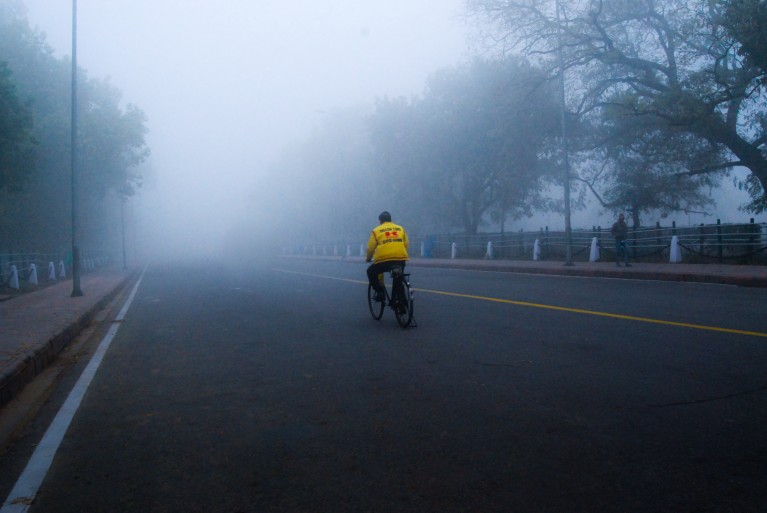
Thick fog in Delhi frequently disrupts traffic and everyday life. Credit: Neha Gupta/Moment/Getty Images
Increase in the use of water to irrigate winter crops in the Indo-Gangetic Plain (IGP) may heighten fog disruptions in adjoining Delhi and north India, a new simulation study says. The model suggests considering irrigation needs as a key input for accurate weather forecasts1.
Forecasting fog conditions is challenging due to the interplay of multiple processes and uncertainty about how to represent them in numerical weather prediction (NWP) models. Researchers at the University of East Anglia, UK, and India’s Ministry of Earth Sciences say that fog events may be connected to additional irrigation, which began with the introduction of double-cropping in the 1960s, during the dry winter season. Irrigation alters surface soil moisture levels, vital for fog to form.
To test their hypothesis, the researchers ran simulations on the UK Met Office Unified Model, comparing scenarios with and without winter irrigation. They used satellite-derived soil moisture data and adjusted it to account for irrigation in the Delhi-focused simulation.
From 1972 to 2010, winter irrigation in the IGP increased by 10 millimetre every month in every decade. In the same period there were no major changes in winter rainfall trends. The rise in water use was linked to increased fog frequency.
Simulations that included irrigation accurately replicated fog development in line with satellite and on-site observations. Moisture movement from irrigated areas contributed to fog blanketing urban areas such as Delhi. The accuracy of forecasting improved by accounting for irrigation in the IGP, the researchers say.
